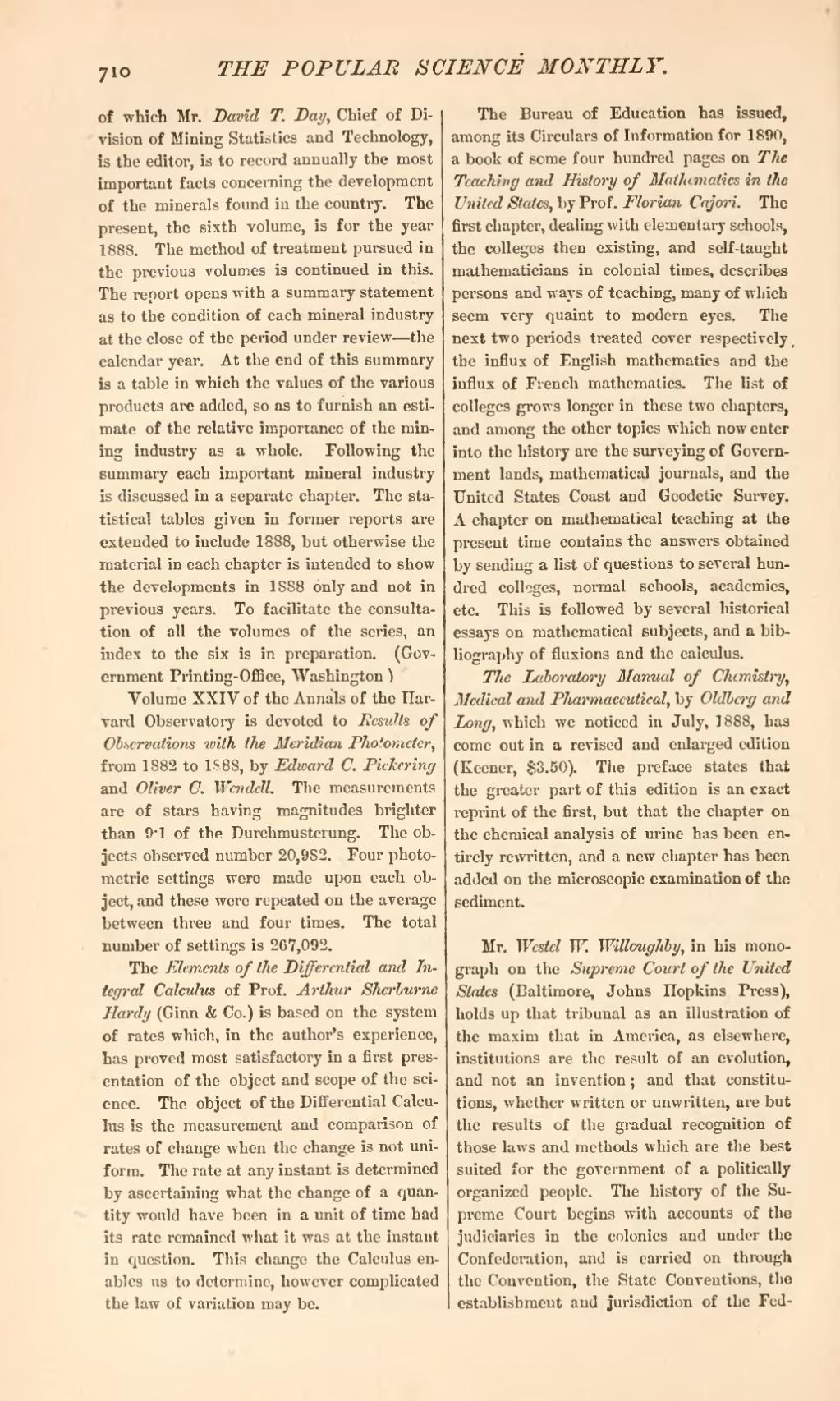of which Mr. David T. Day, Chief of Division of Mining Statistics and Technology, is the editor, is to record annually the most important facts concerning the development of the minerals found in the country. The present, the sixth volume, is for the year 1888. The method of treatment pursued in the previous volumes is continued in this. The report opens with a summary statement as to the condition of each mineral industry at the close of the period under review—the calendar year. At the end of this summary is a table in which the values of the various products are added, so as to furnish an estimate of the relative importance of the mining industry as a whole. Following the summary each important mineral industry is discussed in a separate chapter. The statistical tables given in former reports are extended to include 1888, but otherwise the material in each chapter is intended to show the developments in 1888 only and not in previous years. To facilitate the consultation of all the volumes of the series, an index to the six is in preparation. (Government Printing-Office, Washington)
Volume XXIV of the Annals of the Harvard Observatory is devoted to Results of Observations with the Meridian Photometer, from 1882 to 1888, by Edward C. Pickering and Oliver O. Wendell. The measurements are of stars having magnitudes brighter than 9·l of the Durchmusterung. The objects observed number 20,982. Four photometric settings were made upon each object, and these were repeated on the average between three and four times. The total number of settings is 267,092.
The Elements of the Differential and Integral Calculus of Prof. Arthur Sherburne Hardy (Ginn & Co.) is based on the system of rates which, in the author's experience, has proved most satisfactory in a first presentation of the object and scope of the science. The object of the Differential Calculus is the measurement and comparison of rates of change when the change is not uniform. The rate at any instant is determined by ascertaining what the change of a quantity would have been in a unit of time had its rate remained what it was at the instant in question. This change the Calculus enables us to determine, however complicated the law of variation may be.
The Bureau of Education has issued, among its Circulars of Information for 1890, a book of some four hundred pages on The Teaching and History of Mathematics in the United States, by Prof. Florian Cajori. The first chapter, dealing with elementary schools, the colleges then existing, and self-taught mathematicians in colonial times, describes persons and ways of teaching, many of which seem very quaint to modern eyes. The next two periods treated cover respectively, the influx of English mathematics and the influx of French mathematics. The list of colleges grows longer in these two chapters, and among the other topics which now enter into the history are the surveying of Government lands, mathematical journals, and the United States Coast and Geodetic Survey. A chapter on mathematical teaching at the present time contains the answers obtained by sending a list of questions to several hundred colleges, normal schools, academics, etc. This is followed by several historical essays on mathematical subjects, and a bibliography of fluxions and the calculus.
The Laboratory Manual of Chemistry, Medical and Pharmaceutical, by Oldberg and Long, which we noticed in July, 1888, has come out in a revised and enlarged edition (Keener, $3.50). The preface states that the greater part of this edition is an exact reprint of the first, but that the chapter on the chemical analysis of urine has been entirely rewritten, and a new chapter has been added on the microscopic examination of the sediment.
Mr. Westel W. Willoughby, in his monograph on the Supreme Court of the United States (Baltimore, Johns Hopkins Press), holds up that tribunal as an illustration of the maxim that in America, as elsewhere, institutions are the result of an evolution, and not an invention; and that constitutions, whether written or unwritten, are but the results of the gradual recognition of those laws and methods which are the best suited for the government of a politically organized people. The history of the Supreme Court begins with accounts of the judiciaries in the colonies and under the Confederation, and is carried on through the Convention, the State Conventions, the establishment and jurisdiction of the Fed-

